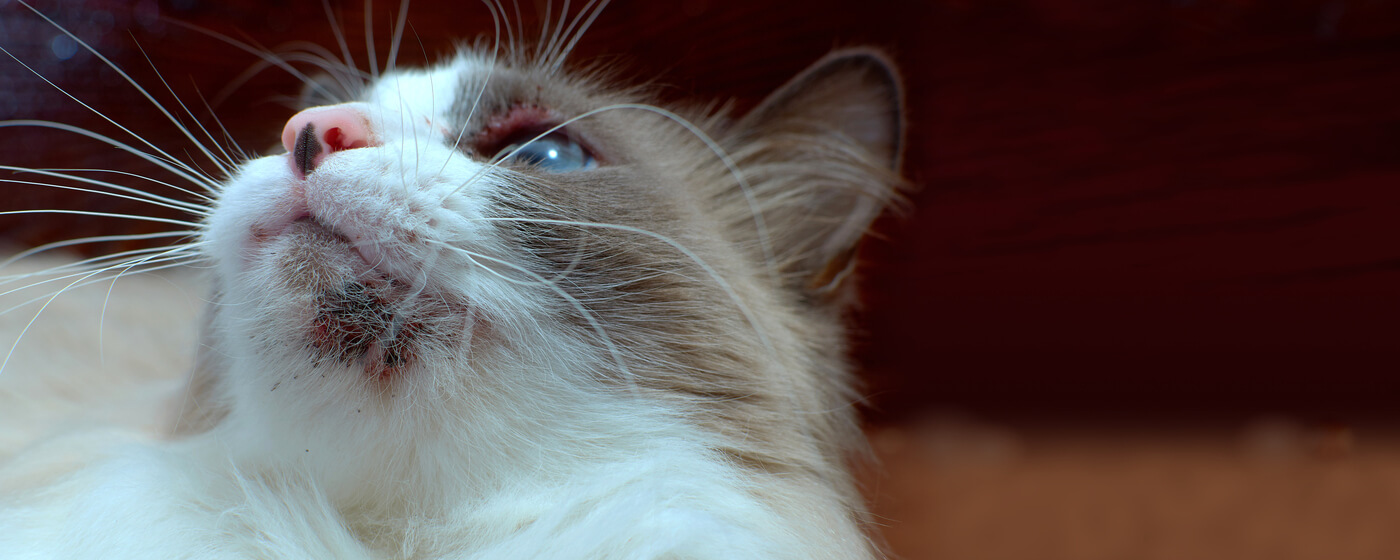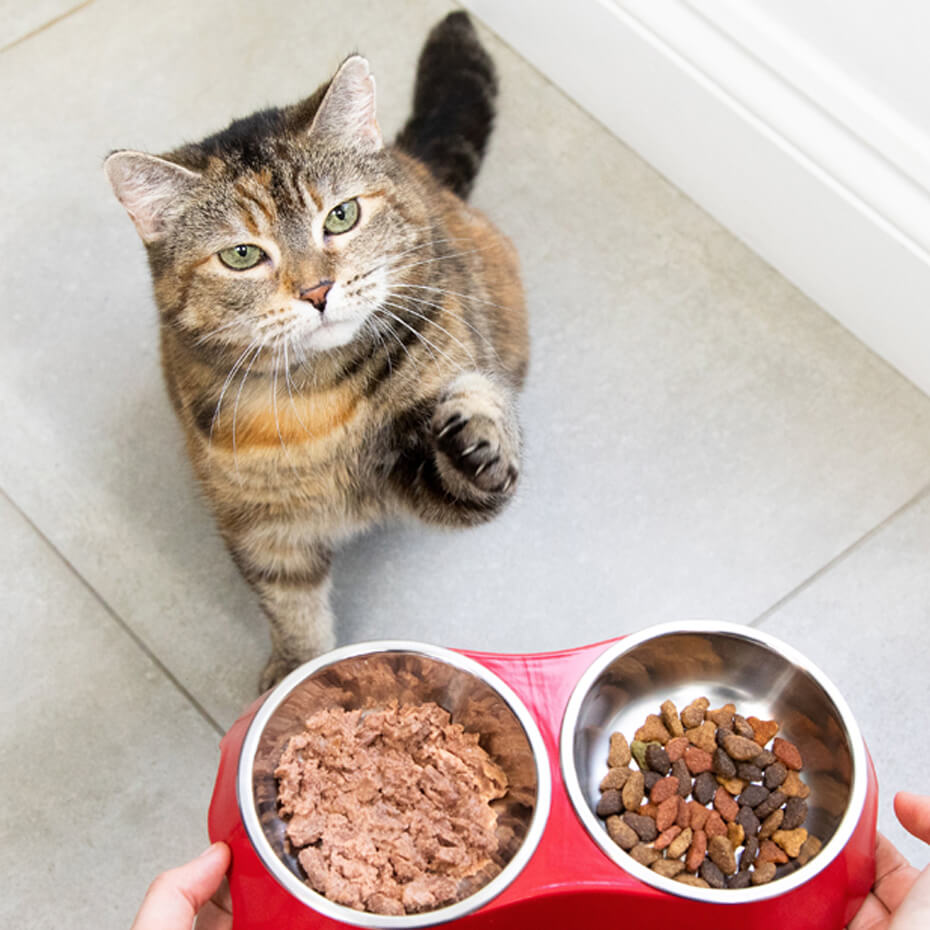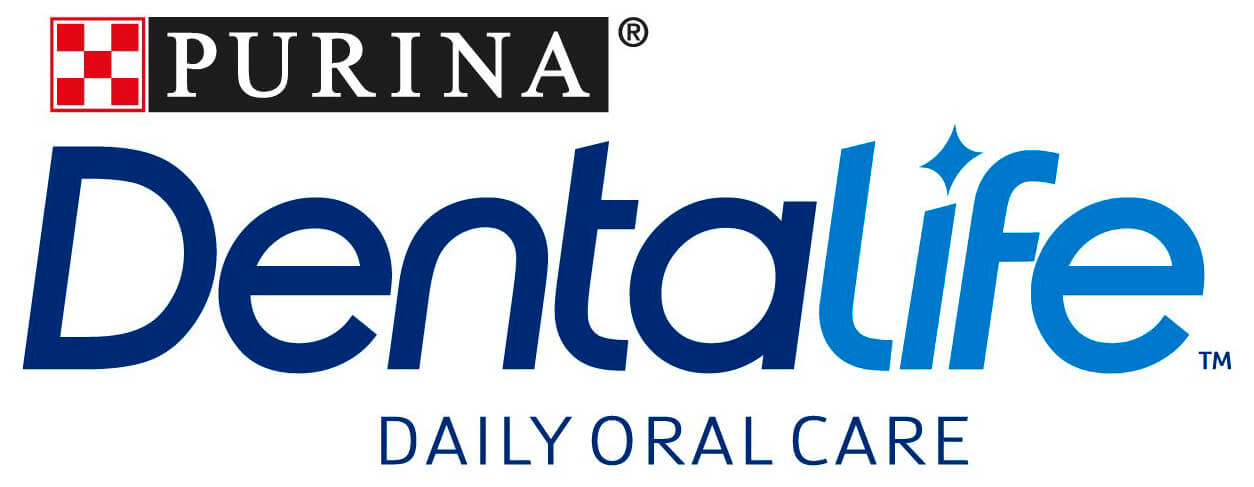
Cat acne is relatively uncommon, but can affect felines of any age, gender and breed. Here is what you need to know if you start noticing pimples on your cat.
Felines of any age, gender and breed are thought to be equally predisposed to cat acne. Studies suggest that there is unlikely to be hormonal component to the condition. Although it’s still unclear why it develops, there are a few things cat owners can try to help their pet get back to their normal self. Keep reading to find out how feline acne manifests and which cat acne treatments can help.
What is cat acne?
Cat acne occurs due to excessive keratin production at the hair follicles (follicular keratinization) and over-secretion from sebaceous glands. This leads to blockage of the hair follicles with a combination of keratin and sebum, the oily secretions from the skin glands. In cats, acne is thought to be most common around the chin area, which is why it’s commonly referred to as cat chin acne.
What does cat acne look like?
Cat acne manifests as small bumps accompanied by blackheads or whiteheads. Mild cases can go unnoticed as the appearance can look more like dirt than acne. There may be an associated ‘greasy’ appearance of the fur, which is particularly noticeable in paler cats as there will be a yellow-tinge to the fur around the chin. You may notice a similar condition at the tail base, referred to as stud tail (mainly seen in unneutered male cats).
The acne can lead to a secondary bacterial infection and folliculitis. Severe cases can cause swelling, hair loss, redness and even bleeding.
What causes cat chin acne?
There are a several potential risk factors which have been identified:
• Poor grooming around the mouth due to dental disease
• Stress
• Certain viruses
• Reduced immune response
• Dietary intolerances
• Hyperactive sebaceous glands
What is the treatment for cat acne?
Cat acne can be easily confused with other skin conditions, so it is worth seeking veterinary advice before attempting any home treatments. Be sure to never use human acne treatments on cats, as these are too harsh on feline skin.
Here are some of the most common examples for cat acne treatment:
Cleaning the area
Chlorhexidine antibacterial washes can be used to clean the area where the acne is developing. Use the treatment as advised by a vet, until the breakout has subsided. Aloe vera may also be applied afterwards, to help soothe the skin.
Omega-3
There is some evidence that fatty acids like Omega-3 can help to promote healthy skin and they may be beneficial in cats prone to skin problems, including acne breakouts.
Medicated shampoos
A vet may advise treating mild feline acne cases can with a specific anti-seborrheic shampoo. Antibacterial or antifungal shampoos are sometimes prescribed if secondary infection has occurred. Do not use any human products as these will not be suitable for your pet.
Ointments
A vet will sometimes prescribe a benzoyl peroxide gel to help unblock the affected follicles. However, this can be very irritant to some felines and you should observe your cat for any signs of discomfort. Contact your vet for advice if this occurs.
Systemic antibiotics
For severe cases where an infection has developed, the vet might recommend a course of systemic antibiotics.
Clipping fur
Do not clip your cat’s fur yourself, as this can lead to clipper rash and skin irritation. However, your vet may gently clip away longer areas of fur in affected areas to make treatment easier.
Will cat acne appear again?
In some cases, feline acne can be a recurring condition. You can help avoid relapses or extend the period between flare ups by maintaining a strict cleaning and grooming schedule. Discuss with your vet what the most effective management strategy for your cat.







